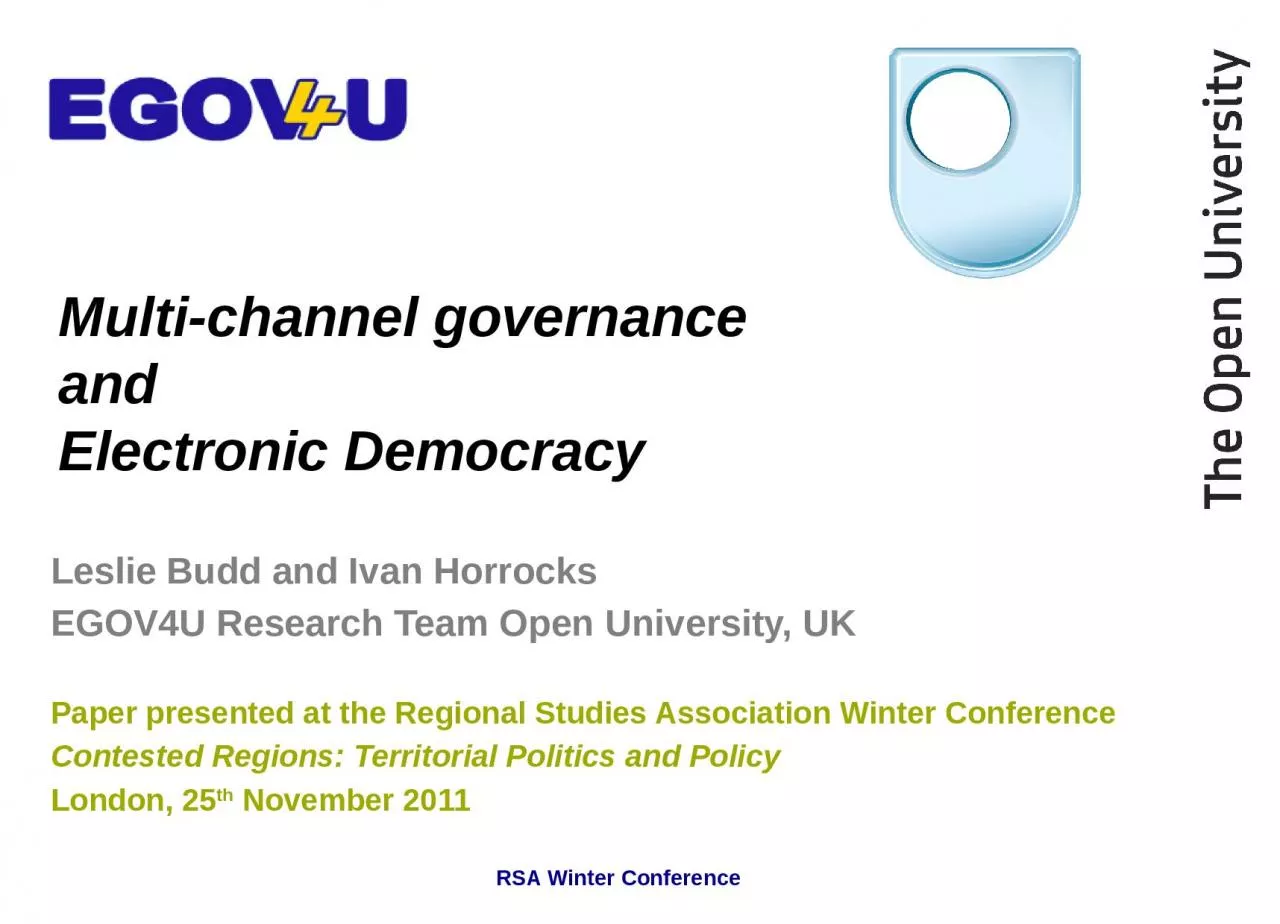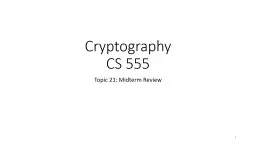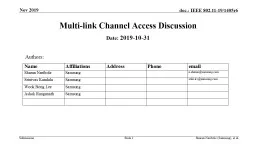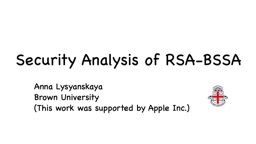PPT-RSA Winter Conference Multi-channel governance
Author : TheOneWithNoFilter | Published Date : 2022-08-03
and Electronic Democracy Leslie Budd and Ivan Horrocks EGOV4U Research Team Open University UK Paper presented at the Regional Studies Association Winter Conference
Presentation Embed Code
Download Presentation
Download Presentation The PPT/PDF document "RSA Winter Conference Multi-channel gove..." is the property of its rightful owner. Permission is granted to download and print the materials on this website for personal, non-commercial use only, and to display it on your personal computer provided you do not modify the materials and that you retain all copyright notices contained in the materials. By downloading content from our website, you accept the terms of this agreement.
RSA Winter Conference Multi-channel governance: Transcript
Download Rules Of Document
"RSA Winter Conference Multi-channel governance"The content belongs to its owner. You may download and print it for personal use, without modification, and keep all copyright notices. By downloading, you agree to these terms.
Related Documents














